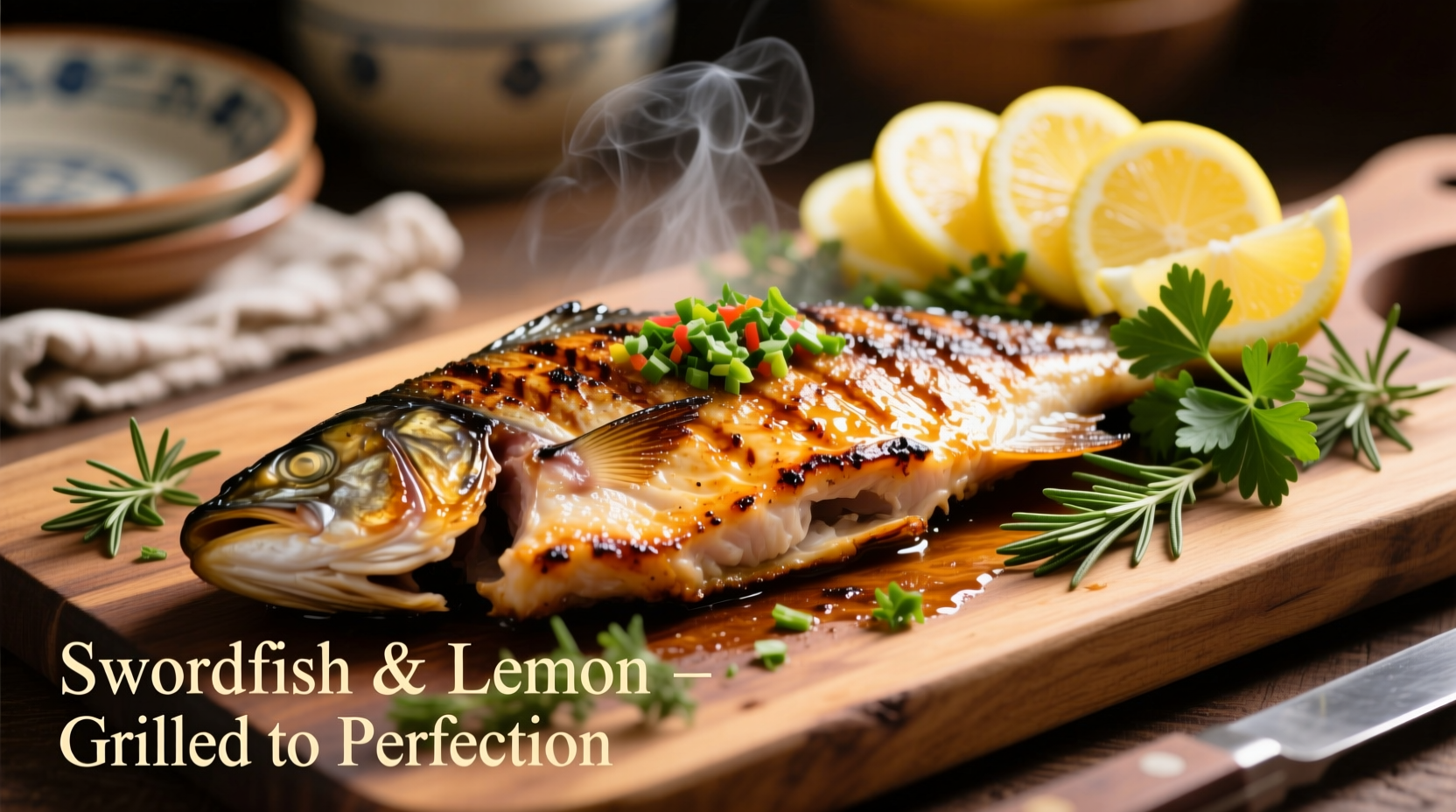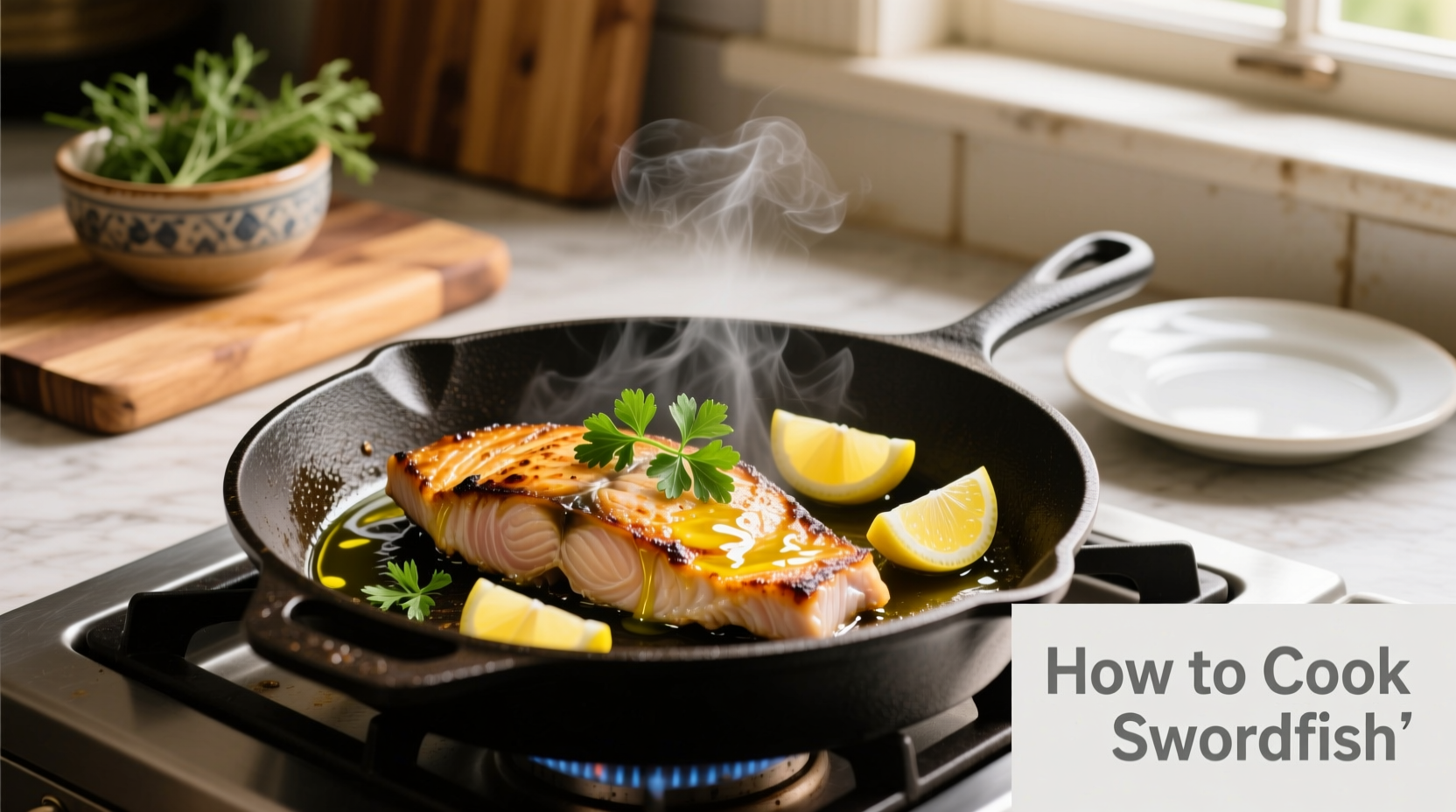Why Swordfish Deserves a Spot on Your Grill
Swordfish isn't just another fish—it's the steak of the sea with a firm, meaty texture that stands up to bold flavors and high-heat cooking. Unlike delicate fish varieties, swordfish maintains its structure when grilled, making it perfect for summer cookouts and weeknight dinners. According to the U.S. Food and Drug Administration, swordfish provides high-quality protein and omega-3 fatty acids, though they recommend limiting consumption to one serving per week due to moderate mercury levels.
Your Swordfish Selection Checklist
Choosing quality swordfish makes or breaks your cooking results. Look for:
- Steaks cut 1-1.5 inches thick (thinner cuts overcook easily)
- Firm texture with no soft spots or discoloration
- Bright white to light pink color (avoid brown or yellow edges)
- Moist appearance without excessive liquid in packaging
Swordfish is most sustainable when caught in the North Atlantic during summer months, according to NOAA Fisheries. Ask your fishmonger about the source—U.S.-caught swordfish generally follows stricter sustainability practices.
| Cooking Method | Prep Time | Cook Time | Best For |
|---|---|---|---|
| Grilling | 15-30 min marinating | 5-7 min per side | Summer cookouts, smoky flavor |
| Pan-Searing | 5-10 min seasoning | 4-6 min per side | Weeknight dinners, indoor cooking |
| Baking | 10-20 min prep | 12-15 min at 400°F | Hands-off cooking, delicate flavors |
| Broiling | 5 min seasoning | 6-8 min total | Quick meals, caramelized crust |
Preparation Pathway: From Counter to Cooktop
Before you start cooking swordfish, proper preparation ensures optimal results. First, remove any remaining bones by running your fingers over the steak—most swordfish steaks are sold boneless, but occasionally small pin bones remain. Pat the steaks thoroughly dry with paper towels; moisture is the enemy of proper searing.
For maximum flavor absorption, marinate swordfish for 15-30 minutes in a mixture of olive oil, lemon juice, garlic, and herbs. Avoid acidic marinades longer than 30 minutes as they can start to "cook" the surface of the fish, creating an unpleasant texture. If you're short on time, a simple seasoning of salt, pepper, and olive oil applied 10 minutes before cooking yields excellent results.

Mastering the Grill: Step-by-Step Swordfish Perfection
Grilling brings out swordfish's best qualities. Follow these steps for restaurant-quality results:
- Preheat your grill to 400-450°F with clean grates brushed with oil
- Season your steaks just before placing on the grill (salt draws out moisture if applied too early)
- Place swordfish at a 45° angle to grill grates for attractive sear marks
- Cook 5-7 minutes per side without moving—this creates a proper crust
- Check internal temperature with an instant-read thermometer (145°F is perfect)
- Rest 3-5 minutes before serving to allow juices to redistribute
According to culinary research from the Culinary Institute of America, swordfish's dense muscle structure requires higher internal temperatures than flakier fish. While USDA recommends 145°F for all fish, many chefs pull swordfish at 140°F and let carryover cooking reach the target temperature, preserving optimal moisture.
Avoid These 3 Swordfish Cooking Mistakes
Even experienced cooks make these common errors when preparing swordfish:
- Overcooking - Swordfish becomes dry and tough when cooked beyond 145°F. Remove from heat at 140°F to account for carryover cooking.
- Using delicate cooking methods - Poaching or steaming works for flaky fish but wastes swordfish's meaty texture. Stick to high-heat methods.
- Ignoring thickness variations - Swordfish steaks often have tapered edges. Position thicker parts closer to heat source or cover thinner sections with foil.
Serving Suggestions That Elevate Your Swordfish
Swordfish's robust flavor pairs beautifully with bright, acidic accompaniments that cut through its richness. Try these combinations:
- Mediterranean style: Serve with lemon-dill sauce, roasted cherry tomatoes, and olives
- Summer fresh: Pair with grilled peaches, asparagus, and a balsamic reduction
- Caribbean twist: Accompany with mango salsa, coconut rice, and grilled plantains
For wine pairings, choose medium-bodied whites like Viognier or unoaked Chardonnay that can stand up to swordfish's meatiness without overwhelming it. If you prefer red, a light Pinot Noir works well.
Storing Leftovers Safely
Proper storage ensures your cooked swordfish remains safe to eat. Refrigerate leftovers within two hours of cooking in an airtight container. Cooked swordfish keeps for 3-4 days in the refrigerator. When reheating, use gentle methods like warming in a covered dish at 275°F until heated through—avoid microwaving which makes fish rubbery.
Raw swordfish steaks can be frozen for up to 3 months. Wrap tightly in plastic wrap followed by aluminum foil, removing as much air as possible. Thaw in the refrigerator overnight before cooking—never thaw at room temperature.
Frequently Asked Questions
Here are answers to common swordfish cooking questions from home chefs:











 浙公网安备
33010002000092号
浙公网安备
33010002000092号 浙B2-20120091-4
浙B2-20120091-4